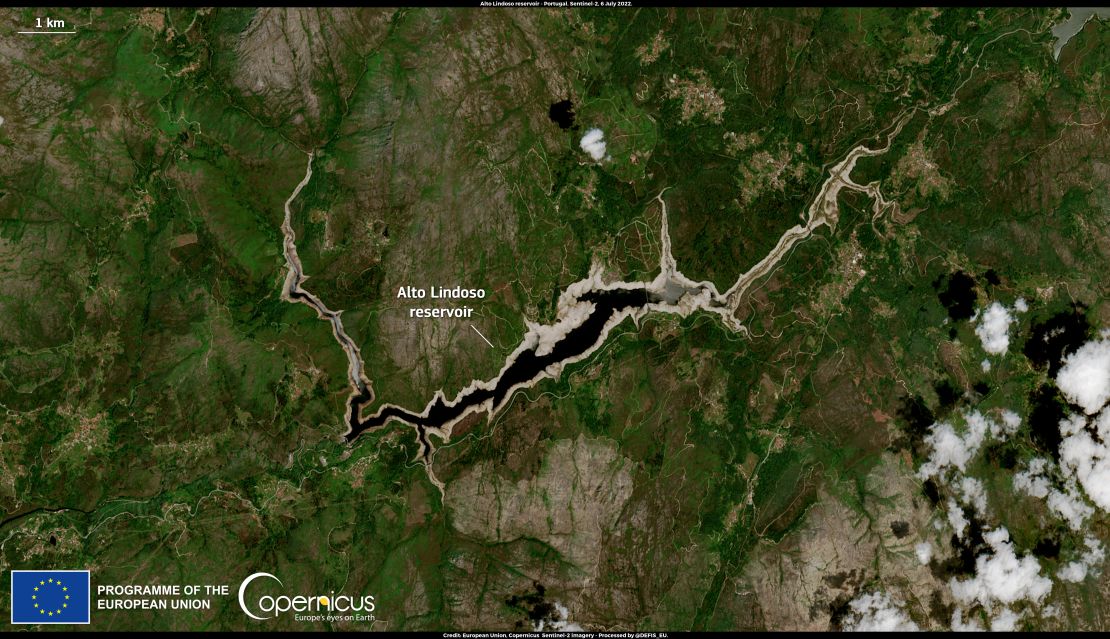After the second-warmest June on record, western Europe is bracing for its second dangerous heat wave of the summer.
The UK, Portugal, Spain and France are facing record-breaking temperatures this week, with little relief in sight.
Hot conditions will continue to worsen ongoing wildfires in southwestern Europe. Level 3 heat alerts, the highest level possible, are in place for 14 states within Portugal and in eastern Spain through the end of the week.
Record heat in the United Kingdom
On Monday, the UK Met Office issued a “rare” Amber Extreme Heat Warning for Sunday, July 17, as hot temperatures look to build later this week for much of England and Wales.
“Heat-health alerts have now been issued to the majority of the country, with temperatures set to remain consistently high throughout the duration of this week,” reported Dr. Agostinho Sousa, head of Extreme Events and Health Protection at the UK Health Security Agency.
The UK’s record high temperature is 38.7 degrees Celsius (101.7 degrees Fahrenheit), which could be surpassed as soon as this weekend, according to the met office.
“Some models have been producing maximum temperatures in excess of 40 degrees Celsius (104 degrees Fahrenheit) in parts of the UK over the coming weekend and beyond,” the met office’s Rebekah Sherwin said.
As the country prepares, officials are warning about the dangers to vulnerable communities.

“Population-wide adverse health effects are likely to be experienced, not limited to those most vulnerable to extreme heat, leading to potential serious illness or danger to life,” the met office said. “Significantly more people are likely to visit coastal areas, lakes and rivers leading to increased risk of water safety incidents.”
The UK could also experience road closures due to melting surfaces, as well as delays to rail and air travel in the thick of the extreme heat.
Spain, Portugal, France and Italy
Before the heat advances into the UK, it will bring blistering heat to Spain and Portugal, where “extreme” heat alerts, the highest level, were issued for 14 states across both countries. Lisbon and Santarém could see temperatures reaching 45 degrees Celsius (113 degrees Fahrenheit) as soon as Wednesday.
The heat wave is expected to continue until at least the end of the week on the Spanish mainland, Spain’s national weather service said on Monday.
It’s not just the Iberian Peninsula sweltering in the heat. France will remain hot through the end of the week as well, reaching temperatures in the mid 30s. Heat alerts cover parts of eastern France, including Toulouse and Bordeaux.
The European region is all too familiar with this. Last month Europe reached record high temperatures and their second-warmest June on record.
“Daily maximum temperatures in Spain, France, and Italy soared above 40 °C and the extreme heat exacerbated the ongoing drought conditions in the Po River basin,” Europe’s Copernicus Climate Change Service said.
Much of Italy has also been experiencing a summer heat wave. Verona will see highs reaching 38 degrees Celsius (100 degrees Fahrenheit) by Friday.
Eleven died on July 3 following an ice avalanche on the Marmolada glacier in the Italian Alps. Italian Prime Minister, Mario Draghi, blamed the collapse on the “deterioration of the environment and the climatic situation.”
The Italian government last week declared a state of emergency for five northern regions of Italy under extreme drought conditions.
“Most of us can enjoy the hot weather when it arrives, but it is also important to keep yourself hydrated and to find shade where possible when UV rays are strongest, between 11 a.m. and 3 p.m.,” Dr. Sousa said. “If you have vulnerable family, friends and neighbors, make sure they are aware of how they can keep themselves protected from the warm weather.”
The threat of wildfires

Thirty-five wildfires in Portugal have left 29 people injured so far, the Portuguese Civil Protection department said in a news conference on Saturday.
The European Commission has mobilized its firefighting fleet to help Portugal, and according to CNN Portugal, more than 80 municipalities in 10 districts are at maximum risk of fire for the next few days.
The Ourém fire, 80 miles north of Lisbon, Portugal, has torn through nearly 5,000 acres since July 7. It is currently the largest in the region, while hundreds of firefighters are working to contain it.
The heat will increase the risk for fires with progressing dry conditions. The Portuguese government declared a “state of contingency” to reinforce emergency services ahead of the heat wave. Most of the country has “extreme” to “very extreme” fire danger throughout the week, according to the European Forest Fire Information System.
Coruche, Santarém could see a 48-degree high (118 degrees Fahrenheit) on Thursday, which would break an all-time record for Portugal, according to the Portuguese Institute of the Sea and the Atmosphere (IPMA).
The IPMA also said more than 96 percent of the country is experiencing “severe” to “extreme” drought, the highest two levels, which creates a dry environment that can easily spark wildfires.
Portugal’s Critical Fire Period runs from July 1 to September 30. During extreme fire risk, burning recreational bonfires, waste piles, fireworks or fires of any kind is prohibited. Some forest spaces may also be restricted to unauthorized persons.
CNN’s Sharon Braithwaite, Duarte Mendonca, Al Goodman, and Benjamin Brown contributed to this report.


